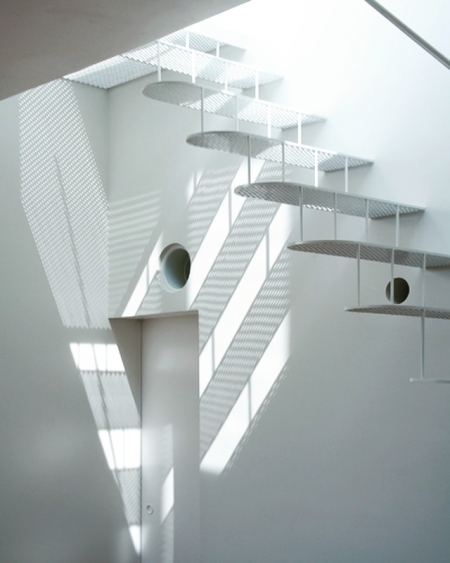真の姿
ストラクチャーを消すけれど、そこに現れるのは装飾ではなくて真の姿となるように。
建築を人が自身の手中で扱えるデザインで構成しようとすると、ストラクチャーの存在を消す、あるいは、ストラクチャーをデザイン要素として扱わないようにする。
それは、人が自身の手中で扱えるデザインと、建築のように人のスケールを超えて存在するデザインの違いで、一番大きいのがストラクチャーの有無だから。
ただ、ストラクチャーは建築が建築として存在するためにはなくてはならないものでもあるし、ストラクチャー自体が現実にそこに建築があることの証明にもなっているので、その存在を消すと残るのは建築と称してストラクチャーに纏わりついていた装飾だけになる。
その装飾は、建築の真の姿を表現していないし、すでに建築では無い。それは単なる造形遊びの成れの果てである。
それを回避するためには、ストラクチャーを消した後に残るものが人と密接に関係を有していれば良く、さらに、それが空間の構成要素であれば、それを「建築」だと強引にしてしまえば良い。そして、人と密接な関係があるのだがら、それを「真の姿」だと、あるいは、今まで気がついていなかった別の「真の姿」だとしてしまえば良い。
"True figure"
Eliminate the structure, but make it appear as a true figure, not a decoration.
When trying to construct an architecture with a design that can be handled by one's own hands, the existence of the structure is erased, or the structure is not treated as a design element.
The difference between a design that people can handle in their own hands and a design that exists beyond the scale of people, such as architecture, is the biggest thing because of the presence or absence of structure.
However, the structure is indispensable for architecture to exist as architecture, and the structure itself is also a proof that there is actually architecture, so if you erase that existence, it will remain It is just the decoration that was tied to the structure, called architecture.
The decoration does not represent the true form of architecture and is no longer architecture. It is the end of mere modeling play.
In order to avoid this, it is only necessary that what remains after the structure is erased has a close relationship with people, and if it is a component of space, it must be forcibly called "architecture". Just do it. And if you have a close relationship with a person, you can call it a "true figure" or another "true figure" you haven't noticed before.

